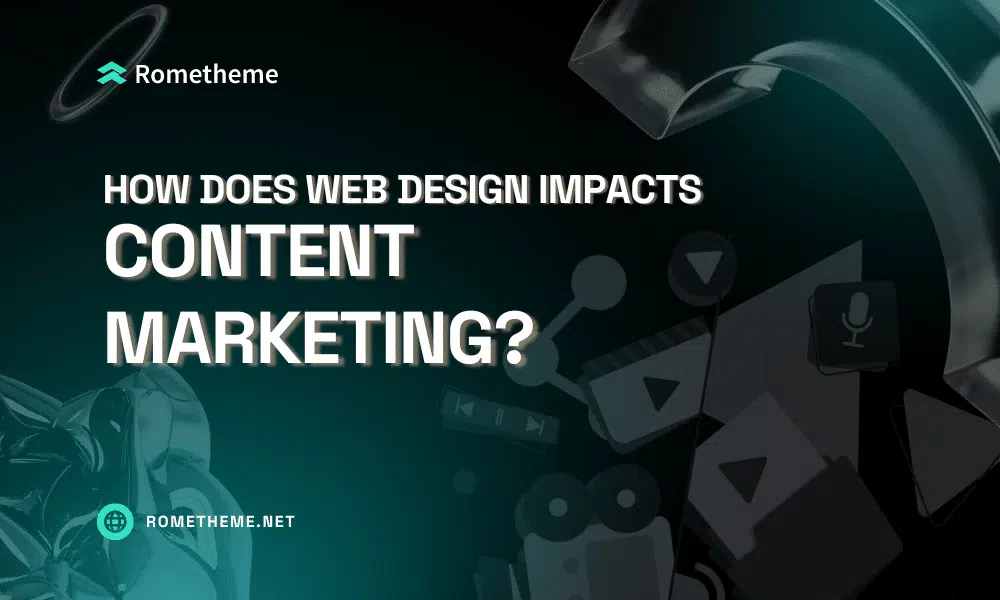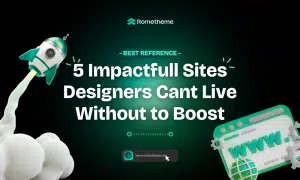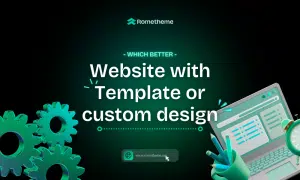What is Content Marketing?
Content marketing is a strategic approach that focuses on creating and distributing valuable, relevant, and consistent content to attract and retain a defined audience.
This differs from traditional product marketing efforts, which aim to build expertise, increase brand awareness, and keep your business top of mind when it’s time for customers to buy.
A well-organized content marketing strategy involves a deep understanding of your target audience’s needs and interests, ensuring the communication of content that solves their problems and answers their questions, stimulating brand loyalty and customer engagement.
If you publish informational, entertainment, or promotional content on your website, it should be easy to access, read, and understand. Web design plays an important role in this. Efficient web design can make your website content more accessible. An efficient navigation design can guide more users towards the information published on your website.
Efficient page layout and layout design can also help users easily navigate content pages to find the info they are looking for. Even a simple web design trick like creating a dropdown menu on your website can instantly make your website content ten times more accessible to the average visitor.
Overall, high-quality website design is key to making the content you publish on your site more accessible to your target audience. But that’s not all. Website design can impact the success of your content in a variety of ways. Here are some of the most important impacts web design has on content marketing.
Comprehension
If a piece of content is not clear, concise, and well-presented, it will fail to attract people’s attention. Web designers handle the latter. They create a clear visual hierarchy on web pages so users can easily scan them and interact with the content that attracts the most attention. This involves the use of many web design techniques, especially the tactical use of white space and typography.
Of course, everyone would prefer the same content broken down into small sections, and web designers must address this preference by reducing clutter and giving each piece of content on a website individuality.
Brand Consistency
The average Internet user determines whether a web page is useful or not in less than 0.05 seconds. So, if your website is confusing to navigate, it will be deemed “unusable” by many people quickly. That’s why web designers have to maintain a certain level of design quality on all pages of a website.
That means keeping the fonts across all content pages consistent, using clear content styling and spacing methods, and using the same color palette across all pages. Consistency in design quality creates a sense of familiarity in the minds of the target audience. This sense of familiarity is essential to creating a loyal customer base on any website.
For example, some studies show that brightly colored call-to-action (CTA) buttons on websites lead to higher conversion rates. Therefore, a smart web designer will ensure that all main CTA buttons display attractive colors, not dull or dark colors.
Appearance
Even if your website content is SEO optimized and very easy to find, users may reject it if it is not well designed or presented. A website that looks and feels outdated doesn’t attract many readers. Web designers can add a visual flair and professionalism to your content and make it appear more trustworthy to visitors.
Elements of Web Design for Effective Content Marketing
Visual Aesthetics and User Engagement
The visual appeal of a website is important in content marketing. Visually appealing design elements, such as a well-thought-out visual hierarchy, engage users and guide their journey through the content.
Using ample negative space and white space improves readability and focuses attention on key messages. The strategic use of visual content and white space in website design plays an important role in attracting visitors and making content more digestible and engaging.
Navigation and Accessibility
User-friendly web design is essential in guiding users through a website. This involves creating intuitive navigation and including features like a search bar to help users find information quickly.
The goal is to improve the user experience by making it easier for visitors to access what they need without frustration. This approach satisfies current users and attracts new ones as word spreads about the site’s ease of use, further strengthening content marketing efforts.
Responsive Design for Various Devices
Responsive design ensures a website is accessible and functional across a variety of devices, from desktop to mobile devices. This adaptability is especially important when users access content on different devices.
Responsive websites automatically adjust their layout and functionality to provide an optimal viewing experience on any device, expanding reach and effectiveness in content marketing.
Color Schemes and Their Psychological Impact
A website’s color scheme can have a significant impact on a user’s perception and interaction with the content. Different colors evoke different emotions and responses, which can be leveraged to improve content marketing strategies.
For example, a website with a calming color palette may be more effective for health content, while bold colors may be better suited to an energetic marketing campaign. The key is to align the color scheme with the tone and purpose of the content.
Incorporating Multimedia Elements
Integrating multimedia elements such as video content into web design can significantly increase the appeal and effectiveness of content marketing. Videos provide an engaging way to present information and can often convey complex ideas more effectively than text alone.
Additionally, relevant infographics, animations, and interactive media content can significantly increase user engagement, making a website a more dynamic and interesting place to visit.
SEO-Friendly Design Elements
SEO-friendly design elements are essential for increasing a website’s visibility in search engines. This includes optimizing the website structure, using appropriate keywords, and ensuring fast loading times.
High search engine rankings are crucial for content marketing, as they increase the chances of your content being found by potential customers. An SEO-optimized website design increases visibility on search engine results pages and contributes to a better user experience, further supporting content marketing goals.
Load Times and Technical Performance
The technical performance of a website, especially its load time, is an important aspect of web design. A slow-loading website can frustrate users and result in a high bounce rate, negatively impacting content marketing efforts.
Optimizing images, simplifying code, and using efficient hosting solutions are some of the ways to improve website performance, ensuring that content is delivered quickly and efficiently to users.
Content Hierarchy and Readability
Organizing content in a clear hierarchy will increase its readability and effectiveness. Valuable content should be easy to access, with important information presented clearly.
Logical structure, combined with useful content that answers audience needs and questions, can significantly increase user engagement and content marketing success.
Clear headings, subheadings, and concise paragraphs help users navigate the content easily, making the website more engaging and user-friendly.
Incorporate Feedback and User Interaction Features
Incorporating user feedback and interaction features into web design can greatly increase the effectiveness of content marketing. Engaging users by allowing them to leave comments, share feedback, or participate in polls makes them feel valued and part of the community.
This level of interaction provides valuable insight into user preferences. This stimulates a sense of loyalty and connection, which is instrumental in building a strong and engaged audience in your content marketing efforts.
Designing an Impactful Website That Showcases Your Content
Layout and Content Presentation
Web page layout is the foundation on which website content is built and presented. When publishing content, it’s important to consider how the content is organized and displayed on the page. The key is to design a layout that looks attractive and improves the readability and accessibility of the content.
Effective web page design involves organizing content logically and using visual cues to guide the reader’s eye through the material. This can be achieved by utilizing headers, bullet points, and infographics to break up the text and make it easier to digest. Additionally, image and video placement should complement the text, adding value and context, not just decoration.
Choice of font, color scheme, and spacing also play an important role in the perception of content. These elements should work together to create a harmonious and aesthetically pleasing page that encourages visitors to engage more with the content.
Additionally, ensuring the design can adapt to different devices and screen sizes is also important, providing a consistent experience across all platforms.
In designing web pages for content publication, the goal is to create an environment where the content can shine. Every design choice should be made to enhance the content message, making it more engaging and effective.
A well-designed web page not only displays content in the best manner but also contributes to the overall credibility and professionalism of the website.
Enhancing User Experience for Better Engagement
Creating a positive user experience is essential in web design, especially when aiming to engage users effectively. A positive experience is characterized by intuitive navigation, fast loading times, and content that is easy to find and consume.
To ensure a smooth user experience, web designers must focus on the needs and behavior of their users. This involves conducting user research to understand what visitors are looking for and how they interact with the site.
Based on this information, designers can create user-centered designs that make the journey through the website as smooth and enjoyable as possible.
Important elements of a positive user experience include a clean and uncluttered interface, clear calls to action, and responsive design that adapts to a variety of screen sizes and devices. Additionally, engaging elements such as animations and interactive features can enhance the experience, making a website more memorable and engaging.
A well-designed website that prioritizes user experience will attract more visitors and encourage them to stay longer and interact more with the content. This increased engagement results in higher conversion rates and more successful content marketing results.
Conclusion
Professional web designers have spent decades designing content-friendly websites. They know exactly what the average internet user is looking for in a website in terms of presentation, aesthetics, and visual appeal. If you publish content on your website, a good web designer can take your content to the next level and help you get more traffic, leads, and overall content marketing success!
Source:
- How Web Design Impacts Content Marketing? by They Make Design
- How Web Design Impacts Content Marketing by DESIGN STUDIO
Visit our website to browse our stuff and follow our Instagram for great content!
Website: www.rometheme.net
Instagram: rometheme_studio









